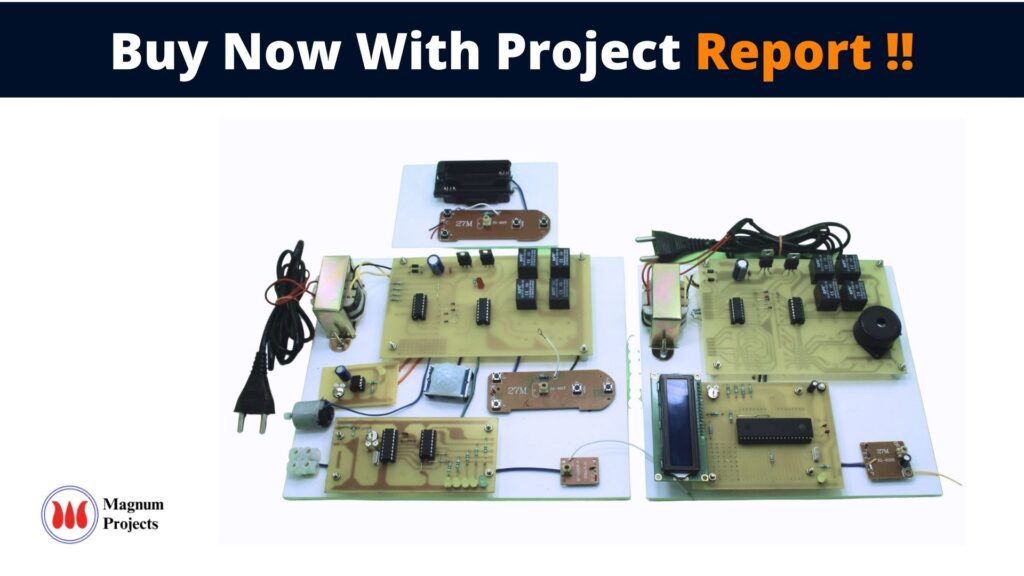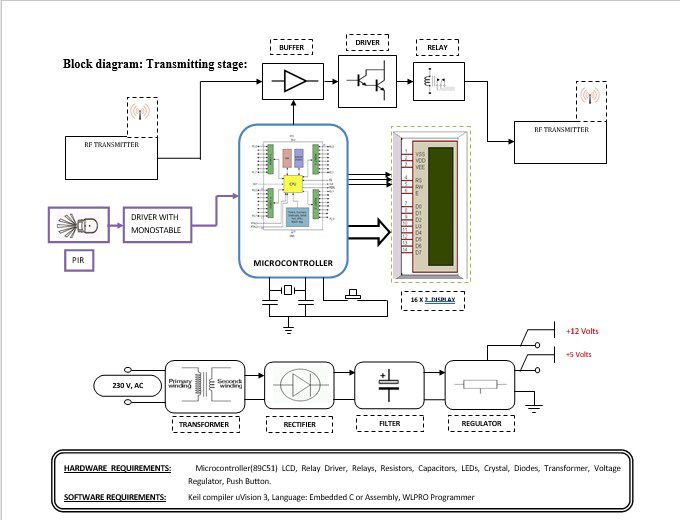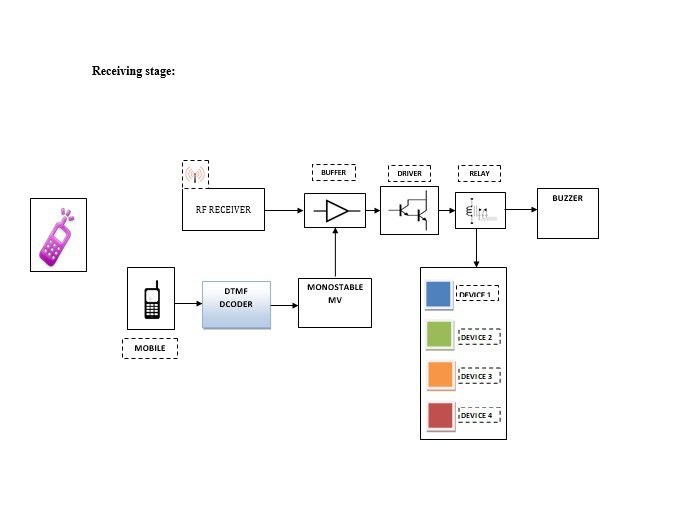Table of Contents
Introduction:


In this sophisticated world, every activity is getting atomized with the help of embedded concepts. All the way so far we have seen that any controlling of parameters, utilizing natural resources for circuit operation, preventing the devices from electric disorders, optimizing, etc…, is carried out with analog instruments. So we decided to develop an electronic aid which is helpful for the above purpose which is called as. Embedded Design Using Microcontroller 89C51For Strong Room Security System
In automation and instrument building we often are confronted by the necessity to precisely control the illumination of light, the rotational speed of a fan, controlling the devices depending on the detection of human being present in the room or not, and device switching using remote. Their illumination can be controlled by switching ON the number of LED as per requirement; depending on the room temperature speed of the FAN or conditioning unit of AC can be controlled as a function of applied voltage. Here is a project for. Embedded Design Using Microcontroller 89C51For Strong Room Security System
It monitors the surrounding environment and electrical conditions depending on those parameters the embedded system will control the operation of the devices. like, if the room temperature is increased more than the desired temperature the system will automatically control the speed of the fan, in other condition it will check for the natural light intensity depending on that microcontroller will control how many sets of LEDs should be switched ON, similarly one of the main features of this project is PIR sensor, this sensor is used to detect the presence of anybody in the room or not concerning that the system will control the action of devices such that switching ON/OFF and this project works on the dc power supply, in presence of sunlight the circuit will work with power generated by the solar cells else with the main power supply.




Block diagram explanation :
Power supply unit:
This section needs two voltages viz., +12 V & +5 V, as working voltages. Hence specially designed power supply is constructed to get regulated power supplies.
Buffers:
Buffers do not affect the logical state of a digital signal (i.e. a logic 1 input results in a logic 1 output whereas logic 0 input results in a logic 0 output). Buffers are normally used to provide extra current drive at the output but can also be used to regularize the logic present at an interface.
Microcontroller:
The 89C51 Microcontroller is the heart of this project. It is the chip that processes the User Data and executes the same. The software inherited in this chip manipulates the data and sends the result for visual display.
The general definition of a microcontroller is a single-chip computer, which refers to the fact that they contain all of the functional sections (cpu, ram, rom, i/o, ports, and timers) of a traditionally defined computer on a single integrated circuit. Some experts even describe them as special-purpose computers with several qualifying distinctions that separate them from other computers.
Features Of Microcontroller :
- 8K Bytes of In-System Reprogrammable Flash Memory
- Endurance: 1,000 Write/Erase Cycles
- Fully Static Operation: 0 Hz to 24 MHz
- Three-level Program Memory Lock
- 256 x 8-bit Internal RAM
- 32 Programmable I/O Lines
- Three 16-bit Timer/Counters
Drivers:
This section is used to drive the relay where the output is the complement of input which is applied to the drive but the current will be amplified.
Relays:
It is an electromagnetic device that is used to drive the load connected across the relay and the o/p of the relay can be connected to the controller or load for further processing.
Indicator:
This stage provides a visual indication of which relay is actuated and deactivated, by glowing respective LED or Buzzer.
DTMF Decoder:
The DTMF decoder used is CM8870. It is used to decode the mobile’s audio signal, i.e., the keypad tone. When the user presses a button on the keypad of the mobile, it generates two tones at the same time. These tones are taken from a table comprising a row frequency and a column frequency. Thus the resulting frequency signal is known as the “Dual Tone Multi-Frequency” signal. A DTMF signal is an algebraic sum of two different frequencies, one from the row frequency (higher frequency) group and another from the low frequency (column frequency) group. The CM8870 decodes the received DTMF tone and then sends its equivalent binary code to the microcontroller. According to the program loaded into the microcontroller, the corresponding action starts.
PIR sensor
(Passive Infrared sensor) A device used to detect motion by receiving infrared radiation. When a person walks past the sensor, it detects a rapid change of infrared energy and sends a signal. PIR sensors are used for applications such as automatically turning on lights when someone enters a room or causing a video camera to begin operating.
This passive method is not as reliable as “active” motion sensors that either bounce back a radar signal or transmit light to a photodetector in the distance. See network camera.
Methodology:
The project consists of a set of PIR-based device switching equipment via; GSM Mobile Handset & GSM Mobile Infrastructure. Though a mobile handset one can dial the assigned number to press the key in mobile when we want to lock the devices if any unauthorized person enters into the home. To turn ON or OFF the devices PIR detects movement and entered person is authorized he having RF ID then all devices are turned ON. Paging is done through RF for wireless transmission.
Advantages:
- The circuit is very useful when you want to operate appliances kept at your home, sitting in your office.
- It can be used in industries for remote operation of devices.
- Unnecessary wastage of electricity can be controlled to a greater extent.
- Maximum power can be saved.
- Electrical safety is designed to prevent device damage & electrical shocks.
- Selectable Sensitivity, Sensitivity can be adjusted to match installation requirements.
Disadvantages:
In this project usage of relays leads to consuming more power.
Applications:
- Forest fire detection.
- Landslide detection.
- Water quality monitoring.
- Natural disaster prevention.
- Industrial monitoring.




